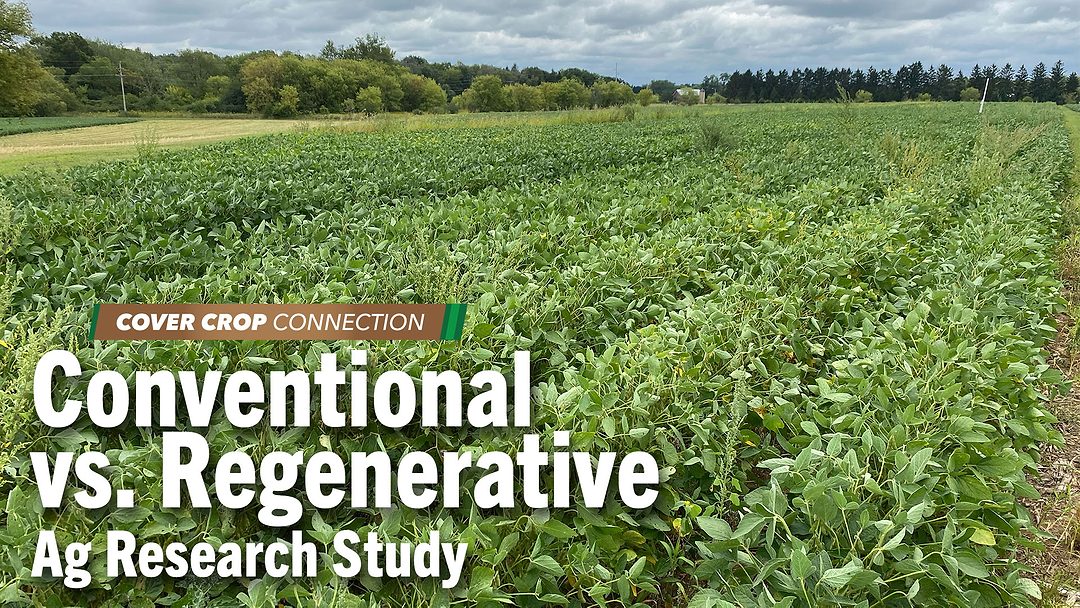Jim Stute, an independent research agronomist and farmer member of the watershed protection committee of Racine County in Wisconsin, is helping to lead a long-term comparison of conventional tillage vs. no-till and cover crops. After just 1 year, the study still has a long way to go, but initially, Stute is seeing a 26.3 bushel per acre yield advantage with conventional. And most importantly, Stute says what he thinks they can do next year to shift those results.
“We found the answer in the fall after harvest when we’re characterizing our biomass yield. So in this trial, we’re looking at all the carbon inputs both above ground and also below ground. That means digging roots. So, we dug roots and what we have here is an image of roots.
This side from the conventional and then this side is regenerative. Now, there is a slight problem with this photograph. I moved the roots to get better lighting but I didn't move the scale so the scale would be up here. So, where we are seeing this cut off in the roots is somewhere between 5 and a half and 6 inches. Obviously we had compaction, in a layer there that prevented the roots from penetrating to get moisture and also nutrients.
And it’s a combination of the two and we can say that based on some of the diagnostic nitrogen testing that we did. So we did basil stock testing which is where after physiological maturity — so you’ve gotten all the yield you’re ever going to get. You take the bottom foot of the corn stalk just above the crown and then the foot beyond that. And you analyze it for nitrate nitrogen. You need to have nitrate nitrogen there because it’s mobile in the plant and until the plant shuts down, that nitrate is going up to the kernels to help fill the kernels in metabolism.
It’s a well calibrated test and when we look at our values we see that in conventional we were in a category that we would call sufficient. For the regenerative system, we were deficient so that tells us that we were starved for nutrients. And then when we do a postmortem on post-harvest soil profile nitrate — so this is nitrate that is left over from the previous season — and that’s a combination of what we applied for the crop as well as what the soil gave up in the form of ammonium — this is what’s left over.
And we see a 4o pound difference between the two of them and there is 40 pounds more in the regenerative plot. So what that tells us is the regenerative plots weren’t as effective as taking up the nitrogen both inherent in the system as well as what we applied. So that’s why we have the yield difference.
So, that's the bad news. Our strategy for this year — we are in soybeans this year — as soon as we get the crop off, as soon as we get our sampling done, we are going to plant cereal rye as a cover crop. We are going to plant it heavier than what we did last year and hopefully with the earlier planting we are going to get a lot more root action. Our intention next year is to plant green so we can maximize root growth to help break up that compacted layer.”
Stay tuned for more results as the study collects data over the next growing season.






Post a comment
Report Abusive Comment